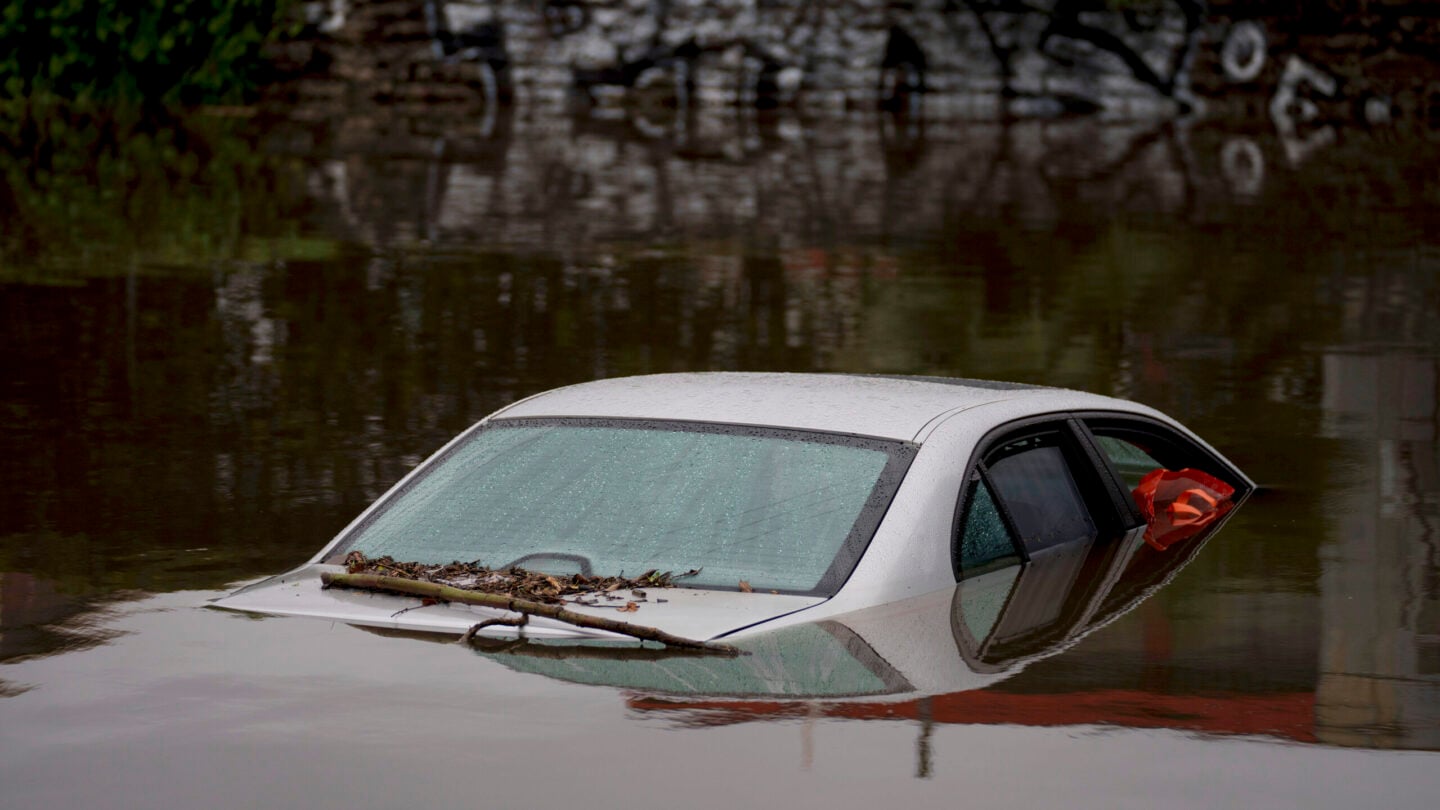What do you do if you’re in a car that suddenly becomes submerged in water?
You may not have given the question much thought, but the answer could help you safely escape a sinking vehicle.
When the Francis Scott Key Bridge in Baltimore collapsed Tuesday morning, video footage showed vehicles tumbling into the Patapsco River below. Perhaps more commonly, flash floods can catch drivers by surprise, trapping them in their cars as floodwaters rush past.
Accidents can also result in vehicles being submerged. In February, shipping executive Angela Chao, the sister-in-law of Senate Minority Leader Mitch McConnell, died after she accidentally drove into a lake at a Texas ranch.
An estimated 400 people die each year in submerged vehicles across North America, making up roughly 10% of all drownings.
Safety experts have studied such accidents for years and coalesced around a few simple steps that people should take in the rare case that they end up in a sinking car. Here’s what you need to know.
Get out as quickly as possible
When your vehicle enters the water, you don’t have much time to act. Experts say you should try to get out right away, when the water level is still below the windows. You’ve got about a minute.
“The vehicle’s only going to float on the surface of the water for seconds to several minutes,” said Gerry Dworkin, a technical consultant for the safety training company Lifesaving Resources.
Once a vehicle is more fully submerged, the pressure from the water against the windows and doors can make it difficult to open them, even if the car’s electronics still work.
Vehicle occupants should not call 911, wait for the car to fill up with water or do anything else that would delay them from getting to safety as quickly as they can, experts say.
“There are no good scenarios where waiting increases your chance of survival,” said Gordon Giesbrecht, a retired professor who studied vehicle submersion at the University of Manitoba. “It only decreases it to virtually zero.”
Remember the acronym SWOC
The best way to survive a vehicle submersion is to escape through the windows before the car is fully underwater, experts agree.
“It’s absolutely critical that when the vehicle enters the water, the very first thing you need to do is to disengage your seat belt, open your windows, and then get out as soon as you can,” Dworkin said.
Giesbrecht suggests people remember a simple acronym, SWOC:
S — Seat belts off
W — Windows open
O — Out immediately
C — Children first
“When you first end up in the water, you’re in a boat with a big leak, and the windows are above the level of the water,” Giesbrecht said. “If you do this quickly — just get your seat belt off and open the window — you’re actually getting out of the vehicle and getting down into the water.”
Giesbrecht recommends that adults help children out of the car first, because once a person exits a sinking vehicle, it’s very hard for them to get back in.
Children should be removed from the vehicle in order from oldest to youngest, he added, because the oldest children will be the most likely to be able to wait by themselves while the rest of the children are brought to safety.
A few warnings
According to Dworkin, one common misconception is that you should wait to escape until the vehicle fills up with water, so that the pressure between the inside and outside of the car can equalize.
“That’s nonsense,” he said. “The escape needs to occur immediately.”
Giesbrecht also warns people to be careful relying on spring-loaded tools that are sold as a way to break car windows in an emergency. While those will work on tempered glass, many new vehicles use much stronger laminated glass that doesn’t break as easily, he said.
Lastly, Giesbrecht urged drivers and passengers to take their safety tips from experts, rather than the movies and TV shows that have gotten vehicle submersion — in his view — wrong.
“I’ve never seen a movie that portrays this correctly,” he said. “It always makes for better TV, but it’s never, ever accurate.”
Copyright 2024 NPR. To see more, visit https://www.npr.org.
9(MDAxODM0MDY4MDEyMTY4NDA3MzI3YjkzMw004))

9(MDAxODM0MDY4MDEyMTY4NDA3MzI3YjkzMw004))








